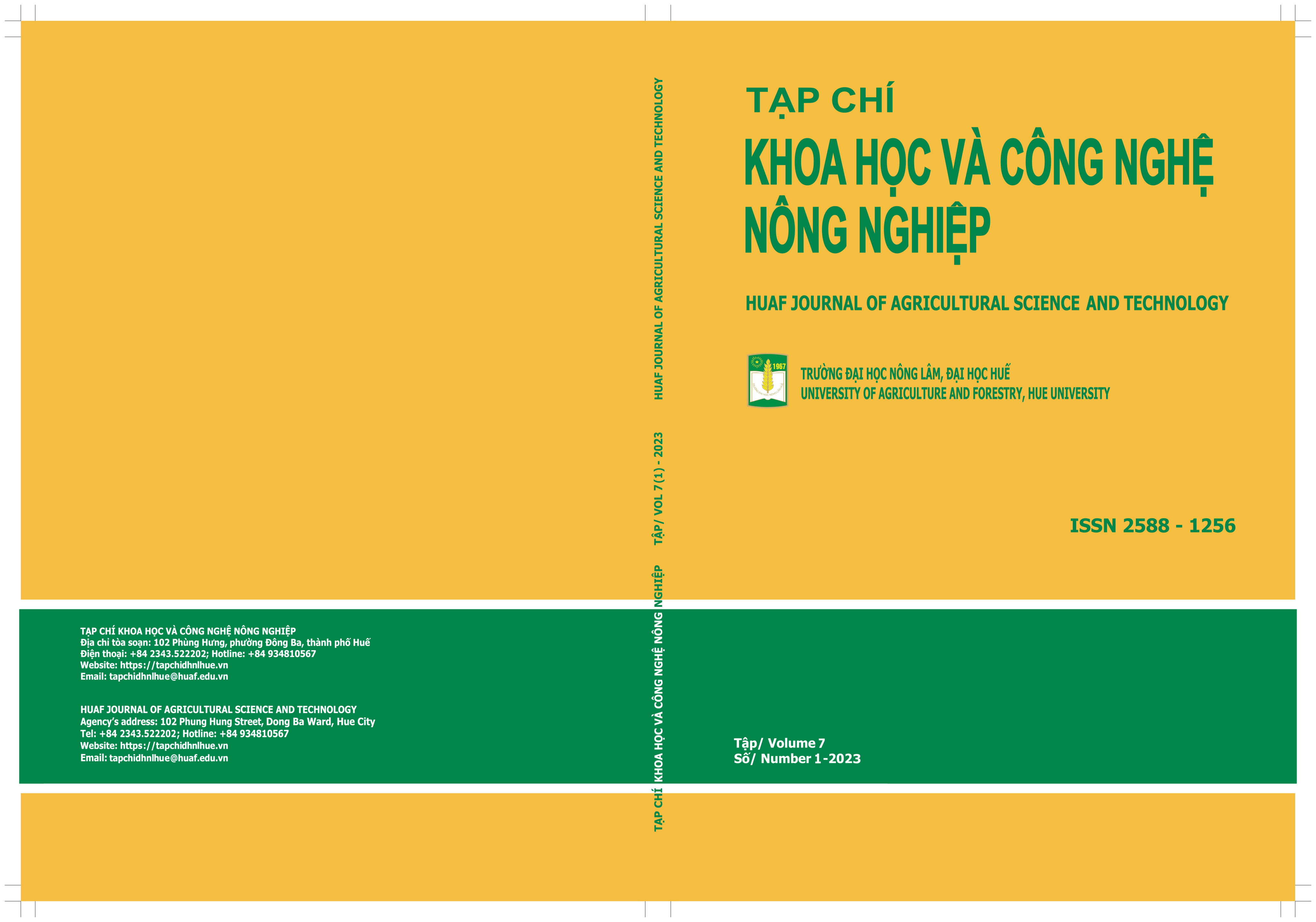##plugins.themes.huaf_theme.article.main##
Abstract
This study aimed to evaluate the effects of different stimulation methods on spawning of the black apple snails, Pila polita. The experiment was conducted in 1 m3 tanks (1×1×1 m) a density of 15 pairs of broodstock snail/tank where the height of water column initially was 40 cm, including six treatments with 6 different water exchanging regimes: 1) Adding 50% water+2 hours drying in the shade (A50-2h); 2) Adding 50% water+3 hours drying in the shade (A50-3h); 3) Adding 50% water+4 hours drying in the shade (A50-4h); 4) Discard 75% water+2 hours drying in the shade (D75-2h); 5) Discard 75% water+3 hours drying in the shade (D75-3h) and 6) Discard 75% water+4 hours drying in the shade (D75-4h). Each treatment was replicated 3 times. Black apple snails were dried in the shade according to the time corresponding to each treatment. Results showed that the highest spawning rate occurred at A50-2h and D75-2h (74.4-77.2%) were higher and significantly different (p<0.05) as compared to A50-4h and D75-4h (58.9-62.8%). The broodstock snails in treatment A50-3h released highest egg clutches and reproductive efficiency (11.8 clutch/m2; 3.92 clutch/day/m2) and statistically different from A50-4h or D75-4h (p <0.05). The quality of snail eggs and new hatching snails were not affected by the different reproductive stimulation methods.

